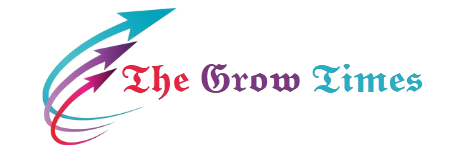The current struggle surrounding Bruin v Bana has garnered considerable attention in numerous sectors. The intricacies of this issue lie in the juxtaposition of coverage, ethics, and public opinion. In this newsletter, we delve into the heart of the dispute, analysing the positions taken by both facets and uncovering the wider implications. Understanding Bruin v Bana is vital for anyone trying to grasp the nuances of this giant occasion.
The Origins of Bruin v Bana
The Bruin v Bana debate unearths its roots in a chain of legislative discussions. Over the previous couple of years, the growing friction among those entities has brought this boiling factor. The conflict represents more than mere confrontation; it highlights a more profound, structural difficulty that might form destiny guidelines. Bruin v Bana encapsulates the complexities of balancing man or woman’s interests with public welfare.
Bruin emerged as a powerful advocate for regulatory adjustments that would affect diverse industries. The core argument from Bruin’s facet is the desire for modernization and reform. The claim is that outdated structures no longer serve the public correctly, and drastic measures must be taken to update guidelines to mirror cutting-edge demands.
In evaluation, Bana has stood corporation on keeping installed traditions and rules. Bana’s stance is one rooted in caution, emphasising that speedy adjustments may cause more damage than good. The anxiety between development and protection paperwork is a significant topic of the Bruin v Bana war.
Key Arguments from Bruin’s Perspective
From the Bruin facet, the vital argument revolves around innovation. Proponents of Bruin argue that the modern-day systems, guidelines, and structures are outdated and prohibit boom and innovation. They advise reforms that could pave the way for technological advancements and a financial boom.
- Outdated Regulations: The primary declaration is that the regulations in the region are now not a match for the cause. Many rules were installed years ago when the world became extraordinary. While once mighty, these policies have become roadblocks to innovation and growth. According to Bruin, reform isn’t simply helpful but essential.
- Technological Progress: The Bruin facet additionally emphasises the significance of adapting to technological advancements. The international landscape has changed notably with the appearance of the latest technology, and policies want to reflect this reality. The present-day system, they argue, needs to deal with the rapid pace of innovation, hindering growth in critical sectors.
- Economic Growth: Another predominant argument from Bruin is that reforming rules will lead to substantial economic increases. By doing away with pointless barriers, agencies will thrive to, in flip, gain the broader economy. Bruin v Bana highlights the monetary capacity that may be unlocked through strategic reforms.

Bana’s Counterarguments
On the other hand, Bana makes a compelling case for caution. Bana’s perspective is formed by a concern for the accidental consequences of a speedy alternate. While Bruin advocates for progress, Bana emphasises balance and measured growth.
- Risk of Unintended Consequences: Bana argues that rushing into reforms could lead to unexpected troubles. While innovation is vital, there is also a need to ensure that any changes made do not negatively affect society. According to Bana, there are severe dangers associated with dismantling installed systems without ultimate knowledge of the long-term outcomes.
- Preserving Stability: Another critical argument from Bana is the want to hold the balance. Changes, particularly those that can be broad and sweeping, can frequently cause instability in numerous sectors. Bana believes that balance should be prioritised, and any reforms must be incremental and punctiliously researched.
- Protecting Vulnerable Populations: A significant challenge raised by way of Bana is the impact of reforms on susceptible populations. Bana argues that speedy reforms could disproportionately affect individuals who are already marginalised. They say that protecting those companies has to be a priority earlier than imposing any fundamental adjustments.

Implications for Policy and the Public
The Bruin v Bana debate is more than just an academic or political war of words. It has profound implications for coverage and the public. If Bruin’s proposals were to be implemented, the modifications ought to cause substantial shifts in several sectors, including generation, financial system, and public offerings.
- Impact on Industries: For industries, the reforms proposed via Bruin could result in extra flexibility, bearing innovation and increase in mind. However, groups that rely on modern guidelines face uncertainty, specifically if reforms aren’t carried out regularly. The tech zone, especially, stands to benefit from Bruin’s proposals.
- Public Welfare: From a public perspective, the Bruin v Bana debate raises questions about welfare. While Bruin advocates for increase and modernization, Bana’s focus on stability and protecting vulnerable populations resonates with many. The undertaking for policymakers will be to discover a balance that guarantees financial increase without sacrificing public welfare.
- Future Policies: The resolution of the Bruin v Bana war will, in all likelihood, set a precedent for future policy debates. The final results should influence how governments approach reform and the stability they strike among innovation and renovation. Both facets of the argument provide valuable insights, but locating a middle floor may be the most straightforward answer.
What’s Next for Bruin v Bana?
As the talk spreads, no clean solutions are inside the Bruin v Bana battle. Both facets offer valid views, and the eventual resolution can have distance-attaining implications. The communication stays ongoing for now, with each aspect persevering to endorse its position.
Policymakers are caught in the centre, tasked with making decisions that could shape the future. The assignment lies in balancing the desire for innovation and development with the desire to shield stability and welfare. Whether Bruin or Bana prevails, the outcome will certainly affect future debates and policies.
Conclusion
The Bruin v Bana debate reflects the tensions between progress and maintenance, innovation, and balance. As each facet continues to make its instances, the general public and policymakers alike should cautiously consider the consequences of any capacity modifications. With each economic boom and public welfare at stake, the future of Bruin v Bana remains uncertain. However, it’s miles clear that its decision could have a long-lasting effect.

